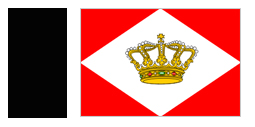Royal Packet Navigation Company of Netherlands East Indies
 This company, often called the KPM, may be considered the Far East/South East Asia component of the large Dutch home mercantile fleet. Commencing operations in the late 19th Century, its ships numbered about 150 when the May 1940 German invasion of the Netherlands necessitated a severing of home relations and a turning to Australia for logistic basing and fleet support for surviving ships. Japan’s entry to the war in December
1941 marked the start of a three month period in which much of KPM’s fleet and virtually all of its land infrastructure were lost.
This company, often called the KPM, may be considered the Far East/South East Asia component of the large Dutch home mercantile fleet. Commencing operations in the late 19th Century, its ships numbered about 150 when the May 1940 German invasion of the Netherlands necessitated a severing of home relations and a turning to Australia for logistic basing and fleet support for surviving ships. Japan’s entry to the war in December
1941 marked the start of a three month period in which much of KPM’s fleet and virtually all of its land infrastructure were lost.
The worst single-ship loss of people occurred when the Rosenboom, carrying 500 passengers and crew, was sunk by Japanese submarine I 59 in the Indian Ocean, only about 80 surviving the sinking and finally only six to be rescued.
As to the remainder of the KPM fleet, some thirty ships operated out of Australia through to war’s end, the details of some as follows:
Ship |
Event |
| Cremer | Trooping Sydney-Port Moresby 6/4/42, sunk 5/9/43 |
| Van Heutz | Trooping Sydney-Port Moresby April and May 1942 |
| Tasman | Trooping Sydney-Port Moresby 6/4/42 |
| Maetsuycker | Trooping Sydney-Port Moresby 6/4/42 |
| Bantam (gt 3322) | Trooping Sydney-Port Moresby May1942, sunk 8/3/43 |
| Bontekoe | Trooping Sydney-Port Moresby May 1942, Sydney-Milne Bay 25/6/42 |
| Van Heemskerk | Trooping Sydney-Port Moresby May1942,sunk14/4/43 |
| Van Heutz | Trooping Sydney-Port Moresby May 1942 |
| Jacob (gt 2839) | Sunk 8/3/43 |
| Sibigo (gt 1594) | Sunk 16/3/45 |
(Part of KPM’s escaped fleet was based in Bombay. Among the many ship casualties, the General van der Heyden, General van Sweeten and Sinombo were totally destroyed on 14 April 1944 when the British ammunition and explosives ship Fort Stikine blew apart in the same dock.)
Closely associated, though not belonging to KPM, the Nederland Line vessel Oranje became well-known in the Asia/Pacific wartime environment. Built in 1939, of 20,565 gross tons, she was laid up in Sourabaya at the time Germany invaded the Netherlands. Offered to Australia as a hospital ship, she was converted in Sydney and from August 1941. Forty voyages later she returned to the Asian passenger trade in July 1946.